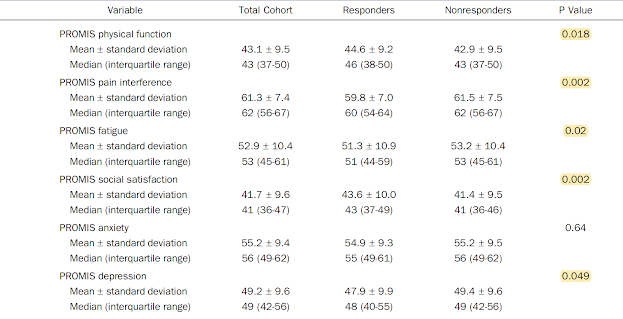These authors point out that patient satisfaction surveys are important measures of the patient experience and these surveys can provide data for quality improvement.
They sought to determine the response rate and the factors associated with the completion of the Press Ganey (PG) Ambulatory Surgery Survey (PGAS) in patients who underwent ambulatory upper extremity surgical procedures.
The PGAS poses questions such as the below regarding the provider of their care
They conducted a review of the orthopaedic registry at a single academic ambulatory surgical center for
patients who underwent an upper-extremity surgical procedure from 2015 to 2019. The institutional Press Ganey database was queried to determine the patients who completed the PGAS postoperatively.
They calculated the response rate, and compared the baseline characteristics and patient-reported outcome measures between responders and nonresponders.
Of the 1,489 patients included, 201 (13.5%) were responders and 1,288 (86.5%) were nonresponders.
Differences existed in baseline characteristics between groups, with responders being significantly older (p = 0.004) and having significantly higher proportions of White race (p < 0.001), college education (p = 0.011), employment (p = 0.005),marriage (p = 0.006), and higher income earners (p < 0.001).
Responders had significantly better baseline Patient-Reported Outcomes Measurement
Information System scores across multiple domains (p < 0.05), but these differences did not exceed the MCID.
The authors concluded that the PGAS response rates were low (13.5%) and that the responders may not be representative of all patients.
Comment: This study points out the perils of non-response bias in the Press-Ganey scores. It provides clear evidence that the 13.5% of patients who responded did not represent the diversity of the population of interest.
We suggest that a similar non-response bias may be present in the application of computer-based outcome measures, such as the computer-based PROMIS. We suspect that PROMIS responders may differ from PROMIS non-responders and that the differences in demographics may be similar to those seen for the PG scores. This is important in that both the Press-Ganey and the PROMIS scores may yield results that are not representative of the total group of patients under consideration; furthermore because of the non-response bias effect the results obtained from the responders may be better than they would be for the entire group of interest.
There seem to be two lessons here: (1) in presenting results with measures such as PG and PROMIS, we must be alert to the response rate as well as to the risk of non-response bias and (2) we must seek and use measures that are as inclusive as possible, so that access, questionnaire fatigue, and technology do not form barriers to patient participation.
Follow on twitter: https://twitter.com/shoulderarth
Follow on facebook: https://www.facebook.com/frederick.matsen
Follow on LinkedIn: https://www.linkedin.com/in/rick-matsen-88b1a8133/
How you can support research in shoulder surgery Click on this link.
Here are some videos that are of shoulder interest



